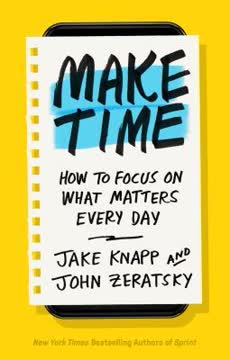Key Takeaways
1. Procrastination is more than laziness; it's a complex behavioral pattern
Procrastination can lead to: bad grades; poor job performance; unhealthy diet choices; health issues; financial problems.
Procrastination is multifaceted. It's not simply a matter of being lazy or unmotivated. Rather, it's a complex behavioral pattern that can stem from various psychological factors such as perfectionism, fear of failure, or difficulty in prioritizing tasks.
Understanding the root causes is crucial. People procrastinate for different reasons, including:
- Being a perfectionist
- Fearing the unknown
- Promising to do it "later"
- Focusing on easy tasks
- Experiencing a lack of motivation
- Not knowing how to get started
- Often getting distracted
- Not having enough time
Identifying your personal reasons for procrastination is the first step in overcoming this habit. By recognizing your triggers and patterns, you can develop targeted strategies to address them effectively.
2. Identify your core projects and values to focus your energy effectively
If you limit your focus to only a few options, then it's easy to take consistent, productive action.
The 25-5 Rule is powerful. This concept, attributed to Warren Buffett, involves listing 25 things you want to do, then circling your top five priorities. The key is to focus exclusively on these five and avoid the other 20 at all costs.
Aligning projects with core values is crucial. To identify your core values:
- Reflect on times when you were happiest and most proud
- Identify what has made you feel fulfilled in the past
- Determine your core values based on these experiences
- Align these experiences with specific value words
- Prioritize your important values
By focusing on a limited number of projects that align with your core values, you can channel your energy more effectively and reduce the likelihood of procrastination.
3. Set S.M.A.R.T. quarterly goals to make progress on what matters most
Short-term goals, like quarterly ones, are often more motivating and easier to achieve than long-term goals.
S.M.A.R.T. goals are effective. They are Specific, Measurable, Attainable, Relevant, and Time-bound. By setting these types of goals for each quarter, you create clear targets that are more manageable and less likely to be procrastinated on.
To implement S.M.A.R.T. quarterly goals:
- Focus on your five core projects
- Create goals with a three-month deadline
- Use a weekly review to track and adjust your goals
- Turn each focus into a project with clear steps
- Review your goals daily to stay motivated
- Evaluate your goals every quarter and adjust as needed
This approach helps break down larger objectives into more achievable chunks, reducing the likelihood of feeling overwhelmed and procrastinating.
4. Learn to say "no" to maintain focus on your priorities
No matter how busy you might be, it's always important to immediately address any situation that could be an emergency.
Saying "no" is crucial for focus. By declining tasks and commitments that don't align with your core projects and values, you free up time and energy for what truly matters. This practice helps prevent the feeling of overwhelm that often leads to procrastination.
Strategies for saying "no" effectively:
- Say no as early and politely as possible
- Identify mandatory tasks and relate them to your goals
- Compare each request to your current projects
- Talk to your boss about your top priorities
- Ask yourself, "What will my obituary say?"
Remember, saying "no" doesn't make you selfish; it makes you someone who clearly understands what's important and is committed to their goals.
5. Plan your weekly schedule around your most important tasks
If you want to be effective in your personal and professional life, it's best to have only five rocks in the jar at any given time.
The "Big Rocks" analogy is instructive. It teaches us to prioritize our most important tasks (the big rocks) by scheduling them first, before filling in the smaller, less critical tasks (pebbles and sand).
To plan your weekly schedule effectively:
- Answer three key questions about obligations, priorities, and available time
- Apply the 80/20 rule to focus on high-impact activities
- Block out time on a calendar for priority tasks
- Practice batching and create "theme days" for similar tasks
- Set aside time for deep work, free from distractions
By structuring your week around your most important tasks, you create a framework that naturally reduces procrastination on critical activities.
6. Use the Eisenhower Matrix to prioritize tasks and make quick decisions
If you keep tracking your tasks using this matrix, asking yourself why you do each activity, and then redesigning your schedule, you'll discover it's not that hard to structure each day on the tasks that have the biggest impact on your long-term success.
The Eisenhower Matrix is a powerful tool. It categorizes tasks into four quadrants based on their urgency and importance:
- Urgent and Important: Do first
- Important but not Urgent: Schedule
- Urgent but not Important: Delegate
- Not Important and not Urgent: Eliminate
By using this matrix, you can quickly prioritize tasks and make decisions about where to focus your energy. This helps prevent procrastination by ensuring you're always working on the most critical tasks first.
7. Implement daily practices to overcome procrastination tendencies
A simple way to fight procrastination is with a 5- to 10-minute review session.
Daily practices create momentum. By implementing specific strategies each day, you can build habits that naturally combat procrastination. Some key practices include:
- Resolve any potential emergencies immediately
- Conduct a daily review to prioritize tasks
- Focus on your Most Important Tasks (MITs) first
- "Eat the frog" by tackling the hardest task early
- Use the Two-Minute Rule for quick tasks
- Create mini habits for challenging tasks
- Use the Pomodoro Technique for focused work sprints
- Build the "discomfort habit" to increase tolerance for difficult tasks
By consistently applying these practices, you create a daily structure that makes procrastination less likely and productivity more natural.
8. Create accountability and reward systems to reinforce positive habits
When you have someone to cheer on your successes (or kick you in the butt when you're slacking), you're less likely to give up.
External accountability boosts motivation. By creating systems that hold you responsible for your actions and reward your progress, you can significantly reduce procrastination.
Effective accountability and reward strategies:
- Use apps like Beeminder or Coach.me to track habits and create consequences for inaction
- Work with an accountability partner to share progress and challenges
- Implement "temptation bundling" by pairing enjoyable activities with important tasks
- Attach all tasks to a larger goal or value to increase motivation
- Share your commitments and progress with friends or on social media
By incorporating these external motivators and reward systems, you create additional incentives to overcome procrastination and follow through on your commitments.
Last updated:
Review Summary
How to Stop Procrastinating received mixed reviews, with an average rating of 3.24 out of 5. Some readers found it helpful, praising its motivational tone and practical tips. Others criticized it for being repetitive and lacking originality, noting that much of the content was derived from other sources. The book's strengths include its concise presentation of productivity techniques and its focus on breaking tasks into smaller, manageable steps. However, some readers felt it was too basic or promotional. Overall, it seems to be a decent starting point for those new to productivity literature.
Similar Books










Download PDF
Download EPUB
.epub digital book format is ideal for reading ebooks on phones, tablets, and e-readers.




